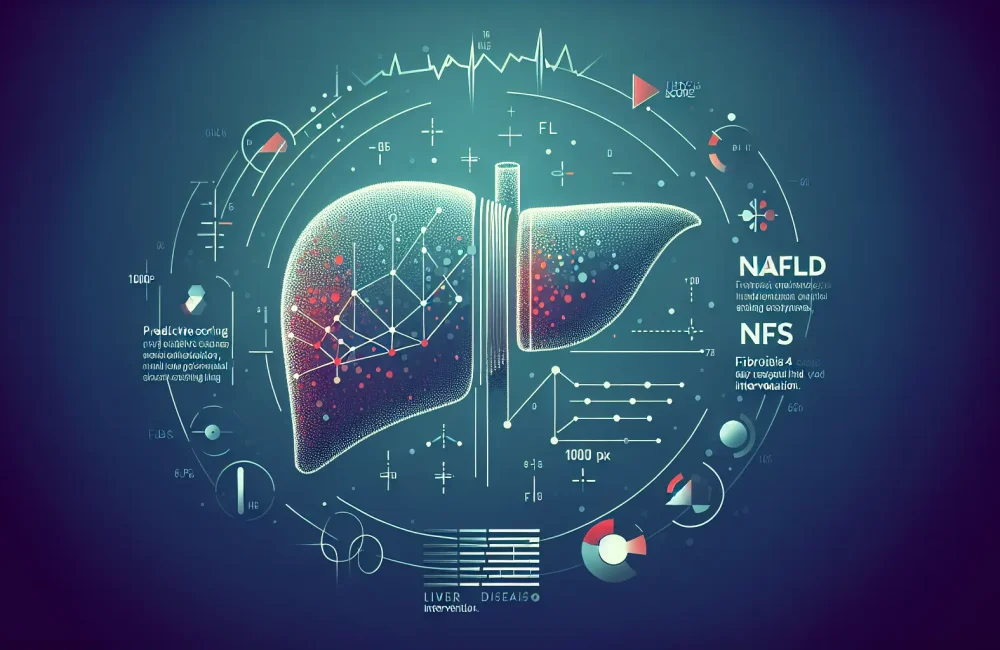By CAFMI AI From Gastroenterology
Effect of Alcohol on Pemafibrate Efficacy in Fatty Liver Disease
This study critically explores how alcohol consumption affects the treatment outcomes of pemafibrate in patients diagnosed with fatty liver disease accompanied by hypertriglyceridemia. Pemafibrate, a novel selective activator of peroxisome proliferator-activated receptor alpha (PPARα), is widely utilized for its effectiveness in lowering triglyceride levels and enhancing liver function, which are pivotal in managing fatty liver conditions. The research compares clinical parameters between two patient groups—those who consume alcohol during treatment and those who abstain—to determine any differences in therapeutic outcomes. Key clinical variables analyzed include reductions in serum triglyceride concentrations, changes in liver enzyme levels such as alanine aminotransferase (ALT) and aspartate aminotransferase (AST), and histological assessment of liver tissue both before and after the treatment period. The study finds that patients who consume alcohol exhibit a significantly attenuated response to pemafibrate compared to abstainers, with lower rates of triglyceride reduction and less improvement in liver enzyme abnormalities and histopathological features. This evidence suggests the negative interaction of alcohol with pemafibrate’s mechanisms, possibly through metabolic interference or exacerbation of hepatic inflammation and oxidative stress, which compromises therapeutic efficacy. Understanding these dynamics is essential for clinicians managing patients with fatty liver disease and hypertriglyceridemia since concurrent alcohol use may undermine treatment goals and disease remission.
Clinical Implications and Patient Management Strategies
The findings of this study carry important clinical implications, especially for healthcare providers in primary care and hepatology contexts treating fatty liver disease with dyslipidemia. Given that alcohol consumption can substantially diminish the effectiveness of pemafibrate, clinicians should incorporate comprehensive alcohol use assessments into patient evaluations before initiating therapy. Patient counseling should emphasize the importance of alcohol abstinence or significant reduction to maximize the benefits of pemafibrate treatment. For patients who are unable or unwilling to abstain entirely, careful monitoring of liver function tests and triglyceride levels is advised to detect suboptimal treatment responses early. Additionally, the study highlights a potential need for individualized therapeutic protocols that consider alcohol use status, possibly involving higher vigilance for liver injury markers or adjunctive lifestyle modifications to counterbalance the negative effects of alcohol. Incorporating this knowledge into standard care pathways can enhance personalized treatment plans and improve overall outcomes in this patient population. Furthermore, these results may influence future guideline updates on managing fatty liver disease with hypertriglyceridemia where alcohol consumption is common, reinforcing the necessity of patient education and tailored therapeutic approaches.
Broader Context, Limitations, and Future Directions
While the study presents robust data on the interaction between alcohol consumption and pemafibrate treatment efficacy, certain limitations should be acknowledged. The population studied was predominantly from a specific demographic, which may affect the generalizability of findings to diverse ethnic groups or geographic locations, such as the broader U.S. healthcare setting. The observational nature of alcohol use reporting may introduce bias, with potential underreporting or variability in consumption patterns influencing outcomes. Moreover, the study does not extensively explore the dose-dependent effects of alcohol or differentiate between types of alcoholic beverages, factors that could modulate liver metabolism and therapeutic response differently. Future research should aim to delineate these nuances, ideally through controlled trials, to refine recommendations further. Additionally, extended follow-up to evaluate long-term outcomes, including progression to fibrosis or cirrhosis and cardiovascular events linked to hypertriglyceridemia, would provide a more comprehensive understanding of pemafibrate’s role amidst alcohol use. For clinicians, these findings underscore the critical need for vigilant patient education, consistent monitoring, and individualized care decisions in managing fatty liver with hypertriglyceridemia, particularly in populations where alcohol intake is prevalent. Translating this evidence into practice can help mitigate risks and optimize therapeutic efficacy in everyday clinical workflows.
Read The Original Publication Here






